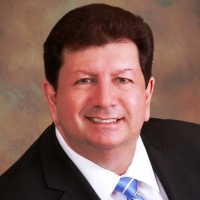What is the purpose of a job buffer in an EB-5 regional center project? How high is the job buffer supposed to be? Should I be looking for an overall job buffer number, or is the number different for each of the investors in a project?
Answers

J Bruce Weinman
Find an EB-5 Visa Lawyer: Immigration AttorneyThere is no "job buffer" requirement, but it is a good idea to have one.

Ed Beshara
Find an EB-5 Visa Lawyer: Immigration AttorneyThe job buffer is not a legal EB-5 immigration requirement, but a marketing requirement especially for the intermediaries. To make the project marketable, then a 30% buffer may be required. That is, more jobs will be created than are required.

Fredrick W Voigtmann
Find an EB-5 Visa Lawyer: Immigration AttorneyA job buffer is simply the number of projected jobs to be created over what is actually required. For example, if you have 10 EB-5 investors in your EB-5 project, then the exact number of jobs (whether direct or in the case of a regional center, direct, indirect, induced) required is 100. If the projected number of jobs to be created is 120, then you have a 20% buffer. It is like insurance in case not all of the projected jobs are actually created. In the example, if the actual number of jobs created falls 15% short, then you still have 105 jobs created and all 10 of the EB-5 investors will get their conditions removed. If there is no job buffer and there is a 15% reduction in the actual jobs created, then two of the investors will have a serious problem. A buffer is good, but only as good as the data and bases for the projections. If you are very comfortable with accuracy and certainty of the job creation projections, then the need for a buffer decreases. It depends on the project.

John J Downey
Find an EB-5 Visa Lawyer: Immigration AttorneyThe buffer I believe is to add extra jobs over the amount of 10 per investor. The extra jobs are added to make sure that when the time comes for removal of conditions you will have at least the 10 needed. You want an overall buffer to protect all the investors in the project.

BoBi Ahn
Find an EB-5 Visa Lawyer: Immigration AttorneyCreating a buffer of more jobs than are actually required by the program gives breathing room/added security to investors in meeting the minimum job creation requirement of 10. Having a buffer of more jobs than are required by the program means that if things do not go as planned and not all the direct jobs that were originally planned can be created, investors will not lose the opportunity to have the conditions removed from their green cards at the I-829 stage. There is no set recommendation or specific number, but a good rule of thumb for a job creation buffer is to plan to create 20 percent more jobs than needed, or a total of 12 jobs per investor.

Jinhee Wilde
Find an EB-5 Visa Lawyer: Immigration AttorneyThe job numbers that all projects/businesses make at the I-526 stage are merely a projection and many projects will inflate the numbers because of their optimism about the project that they are about to undertake. In order to remove the condition on the I-829 successfully several years later, the jobs that you promised earlier at the I-526 stage must be, in fact, created. It is prudent to have a buffer or more jobs than required for the number of investors, in case the projection was overly optimistic and the project could not create the number of jobs that they thought it would. I normally look for at least a 20 percent buffer, as I have seen too many projects where the later investors were not able to remove their conditions because their job number fell short.

Sara Wang
Find an EB-5 Visa Lawyer: Immigration AttorneyAt the I-829 stage, when USCIS evaluates the project's calculations of estimated jobs indirectly created, it does not always arrive at the same number as the project's economist report. They may or may not determine, at that stage, that the number of the jobs created through the project is actually LESS than the number of the jobs predicted and calculated by the project's economist. If the project subscribed to the maximum of the jobs projected by the its economist, and then USCIS disagrees, then the tail-end investors will not get the job distribution, hence their permanent green card. The "buffer" is supposed to serve as a safeguard against a situation like such. The bigger the "buffer," the safer the investors are in terms of risk of not getting their permanent green card, especially for the investors that submitted their petitions on the tail-end.

Ian E Scott
Find an EB-5 Visa Lawyer: Immigration AttorneyFor an EB-5 visa, 10 jobs must be created for each visa issued. If a plan says that it will create 100 jobs and 10 people want a visa, an applicant may feel more comfortable if the plan had a buffer (say create 120 jobs) instead of just the 100. If only 99 jobs were created, only 9 people would get green cards.

Salvatore Picataggio
Find an EB-5 Visa Lawyer: Immigration AttorneyUSCIS only requires 10 jobs to be created per investor. Since job creation reports are projections, many investors feel that EB-5 projects with a "buffer" are "safer." The concept is that instead of 10 jobs per investor, the project projects they will create 12, 14, 20, or more jobs per investor. Again, only 10 jobs per investor are required.

Vaughan de Kirby
Find an EB-5 Visa Lawyer: Immigration AttorneyA "job buffer" is added protection to the investor from an immigration job creation standpoint. By having a buffer, if the developer fails to hit his numbers, you are protected and/or if USCIS thinks job creation is overstated, you have this additional protection. There is no rule of thumb - each project should be carefully reviewed.
DISCLAIMER: the information found on this website is intended to be general information; it is not legal or financial advice. Specific legal or financial advice can only be given by a licensed professional with full knowledge of all the facts and circumstances of your particular situation. You should seek consultation with legal, immigration, and financial experts prior to participating in the EB-5 program. Posting a question on this website does not create an attorney-client relationship. All questions you post will be available to the public: do not include confidential information in your question.






